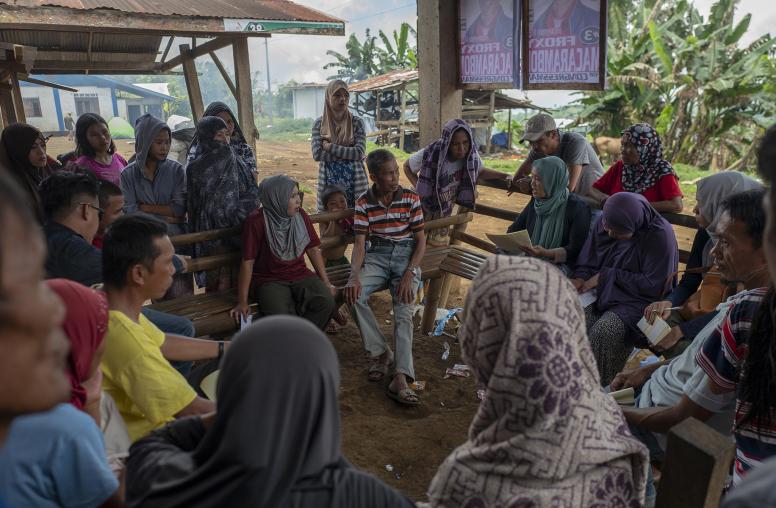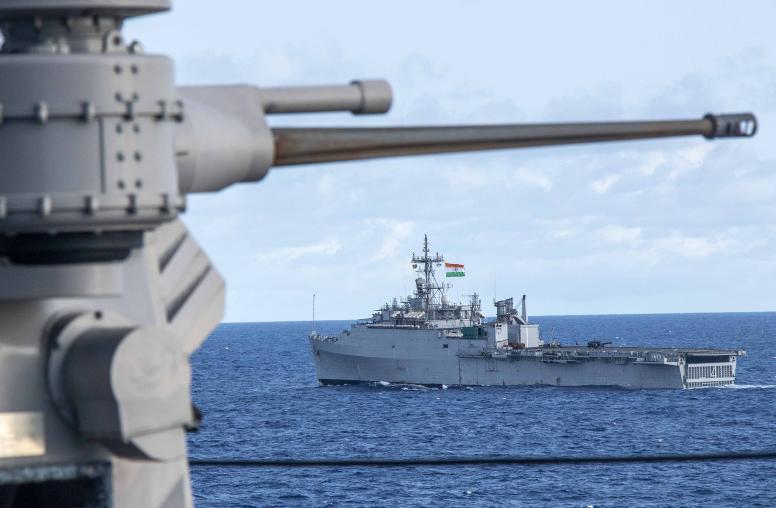New USG Office to Address Need for Coordination of Post-Conflict Civilian Resources
A workshop examined the development of an Office of the Coordinator for Reconstruction and Stabilization within the State Department.
A workshop held at the U.S. Institute of Peace in June examined the recent initiative to develop an Office of the Coordinator for Reconstruction and Stabilization within the State Department.
Participants concluded that the creation of an office is a timely and needed step to rectify the ad hoc manner in which U.S. civilian resources have been deployed to post-conflict environments for more than a decade.
While Iraq and Afghanistan magnified serious deficits in U.S. post-conflict reconstruction capabilities, previous crises -- from Somalia to Kosovo -- had demonstrated the detrimental consequences of an ad hoc civilian response. This deficit, according to the participants, places a heavy burden on military peacekeeping forces that are not trained or equipped to establish law and order and effective governance, relief and reconstruction programs.
Co-sponsored by the Center for Strategic and International Studies (CSIS), the workshop included officials from the National Security Council (NSC), the Departments of State, Defense and Justice, the Congress, and non-governmental organizations.
Mission of the Office of the Coordinator for Reconstruction and Stabilization
State Department and NSC representatives at the workshop stated that the intended mission of the office is to play a lead coordination role with U.S. agencies, the United Nations, and other multilateral organizations; create plans for the civilian response; and manage an interagency response to deploy civilians to peace operations in partnership with the military and other multilateral institutions. Eventually, they said, the office could be tasked with planning, coordination and operational activities across a full spectrum of civilian activities in peace and stability operations. These activities are expected to include: war crimes, law enforcement, the judiciary, corrections, governance, economic reconstruction and development programs. Ultimately, according to many of the participants, budgetary constraints will determine how rapidly the Administration can develop a robust civilian capacity.
A working group, headed by Ambassador Carlos Pascual, is defining the office's role and functions and developing proposals for further action. Ambassador Pascual, the former U.S. Ambassador to Ukraine, who has extensive experience in coordinating U.S. assistance to the former Soviet bloc and Eurasia, is expected to lead The Office of the Coordinator for Reconstruction and Stabilization.
Studies and Legislative Proposals
Studies from prominent research institutions released over the past few years and key legislative remedies introduced in 2004 have also called for a robust U.S. civilian response. These projects by the U.S. Institute of Peace, the Center for Strategic and International Studies, and other Washington-based research organizations helped to shape this initiative, and Administration officials have urged continued study of how to develop an effective civilian capability. In addition, three major bills are currently pending in Congress and according to workshop participants, these bills reflect a striking degree of convergence regarding what is needed.
Commonly referred to as the Lugar-Biden bill, The Civilian Management Reconstruction and Stabilization Act of 2004 (S. 2127) was introduced by the Chairman and Ranking Member of the Senate Foreign Relations Committee. Approved by the SFRC, it is now pending consideration by the full Senate. S. 2127 calls for:
- An office at the State Department headed by a Coordinator who reports directly to the Secretary of State.
- A "Response Readiness Corps" of up to 250 federal personnel prepared to deploy rapidly to crisis zones and establish a civilian headquarters.
- A "Response Readiness Reserve" of more than 500 skilled personnel drawn from federal agencies and non-governmental organizations.
- An education and training program involving the Foreign Service Institute, the National Defense University and the Army War College.
- Pre-deployment exercises involving civilians and military contributors.
- A contingency fund of $100 million to enable the office to respond rapidly to international crises, and $80 million to fund the Response Readiness Corps and education and training programs.
The International Security Enhancement Act of 2004 (H.R. 4185), introduced by Representative David Dreier (R-CA), shares many of the features of the Lugar-Biden bill. It would establish the following:
- An office within the State Department led by an Undersecretary for Overseas Contingencies and Stabilization with three assistant secretaries for Contingency Planning, Training and Coordination.
- An International Contingency Training Center.
- A Civilian Overseas Contingency Force.
- An Emergency Stabilization Operations Support Fund (no dollar amount is specified)
H.R. 4185 also covers Department of Defense activities in a provision that would require the combatant commands, when planning for a contingency operation, to establish a joint interagency task force under its aegis. Interagency coordination would be covered too by the creation of a Joint Task Force for Stabilization, Reconstruction, and Contingency Operations Coordination in the Executive Office of the President.
The third piece of legislation, The United States Assistance for Civilians Affected by Conflict Act of 2004 (H.R. 4058), was introduced by Representative Henry Hyde (R-Ill), Chairman of the House International Relations Committee. It addresses both conflict and post-conflict environments and would:
- Invest authority in the Office of the President, as opposed to any specific department.
- Authorize assistance to protect citizens during armed conflict; prevent or respond to foreign crises, such as genocide or mass killing; support democracy for countries in transition to democracy; rehabilitate victims of war; demobilize and reintegrate former combatants and prevent famine during complex humanitarian emergencies.
- Create a $200 million emergency fund.
According to a top Senate aide present at the Institute workshop, these three bills are likely to "remain in queue," and be "considered at the earliest possible moment."
Recommendations
Although the State Department has begun to set up the reconstruction and stabilization office, participants at the workshop recommended the following actions to ensure that the office evolves beyond a planning phase to become operational:
- Secure Congressional funding that provides sufficient flexibility to enable the office to respond quickly to crises;
- Obtain Congressional funding to provide resources for a headquarters of 100 to 150 personnel and to develop a civilian reserve cadre;
- Conduct an analysis of the authorities that will be required to enable the office to recruit and deploy personnel and secure Congressional action as required;
- Staff office with personnel experienced in rebuilding economies, establishing effective police and judicial institutions, running prisons, etc;
- Create rosters of rapidly deployable personnel with the requisite skills and training; and
- Develop an effective, inter-agency process for coordination of peace and stability operations.
The views expressed here are not necessarily those of the Institute, which does not advocate specific policies.
The United States Institute of Peace is an independent, nonpartisan institution established and funded by Congress. Its goals are to help prevent and resolve violent international conflicts, promote post-conflict stability and development, and increase conflict management capacity, tools, and intellectual capital worldwide. The Institute does this by empowering others with knowledge, skills, and resources, as well as by directly engaging in peacebuilding efforts around the globe.




